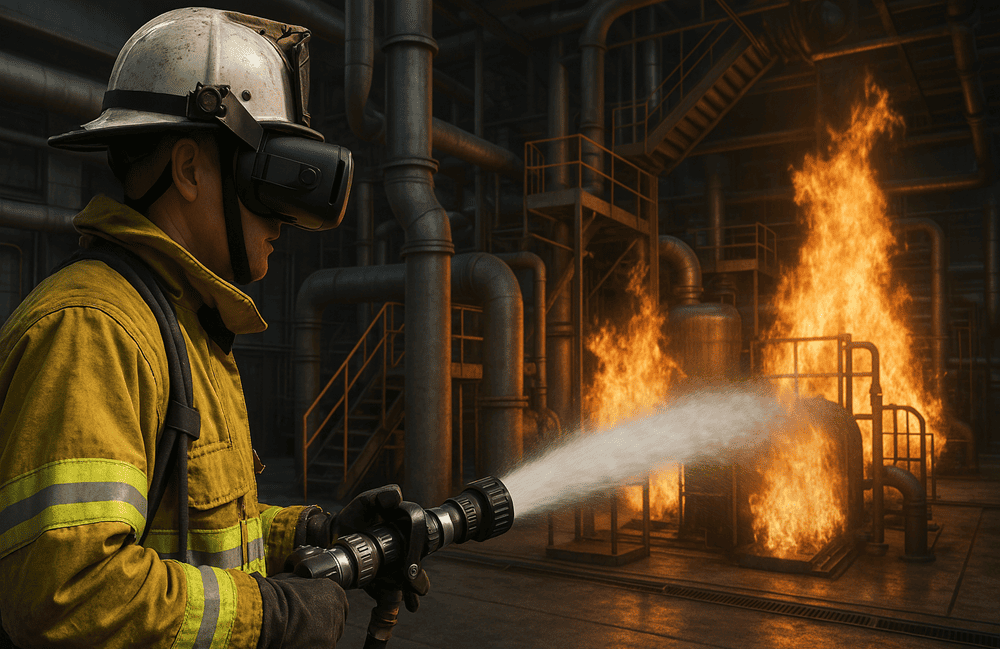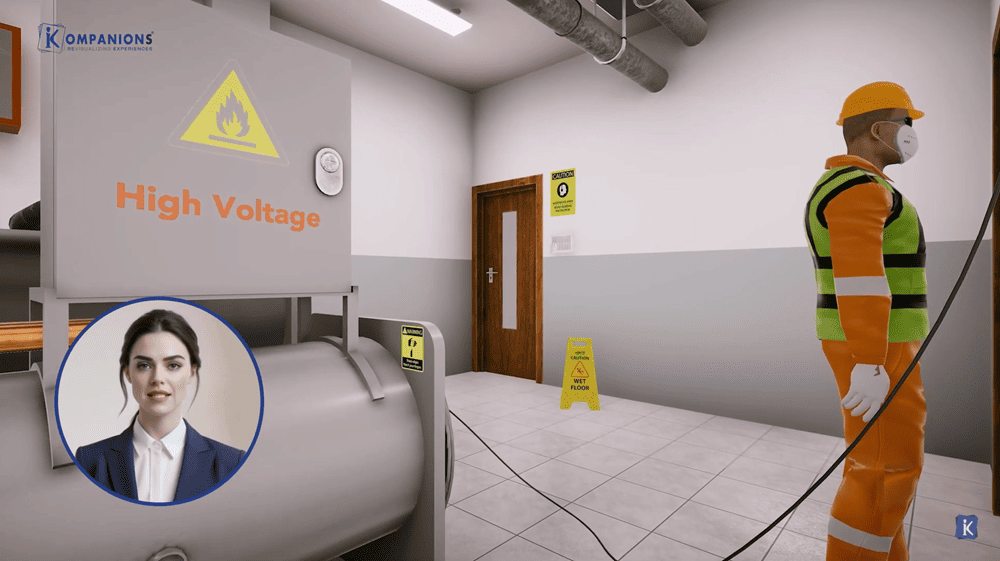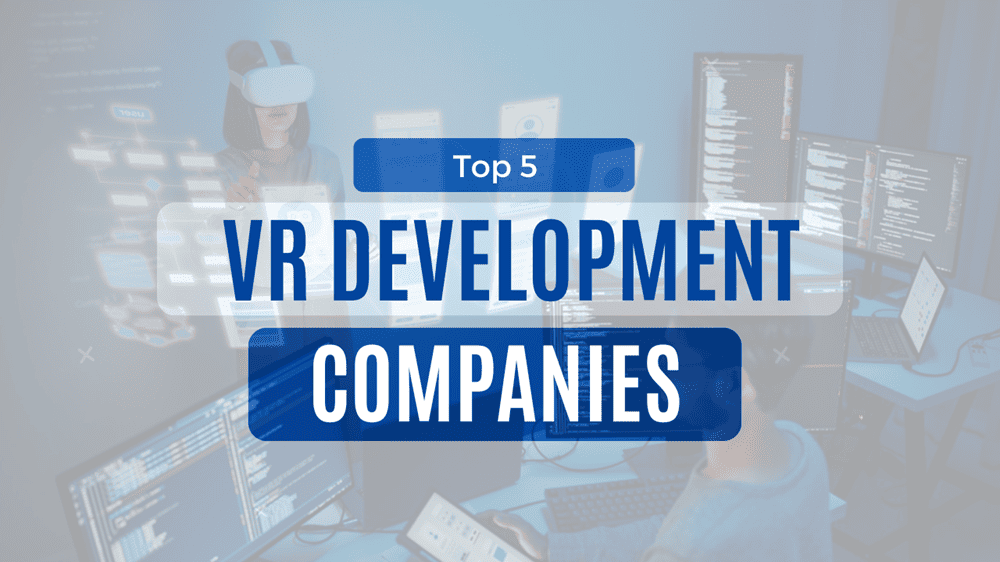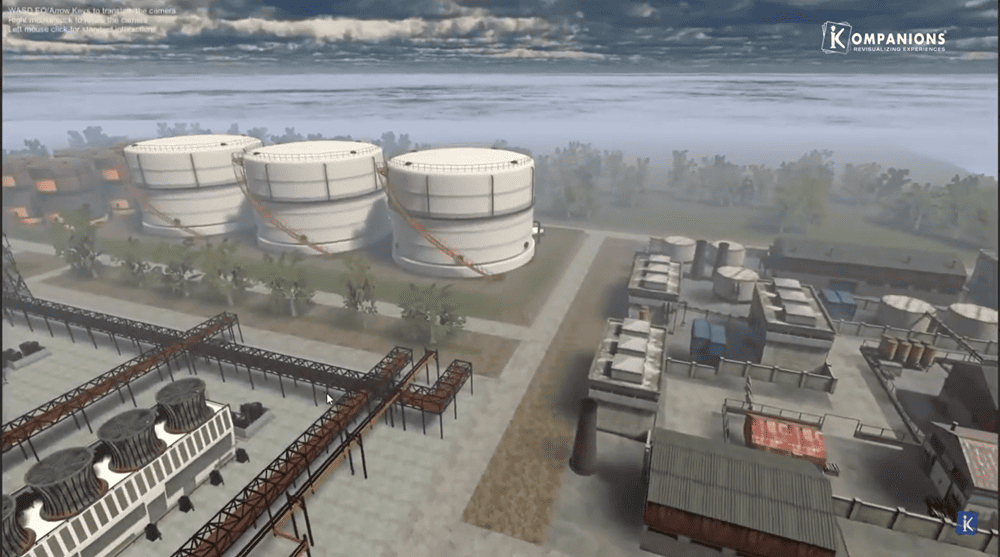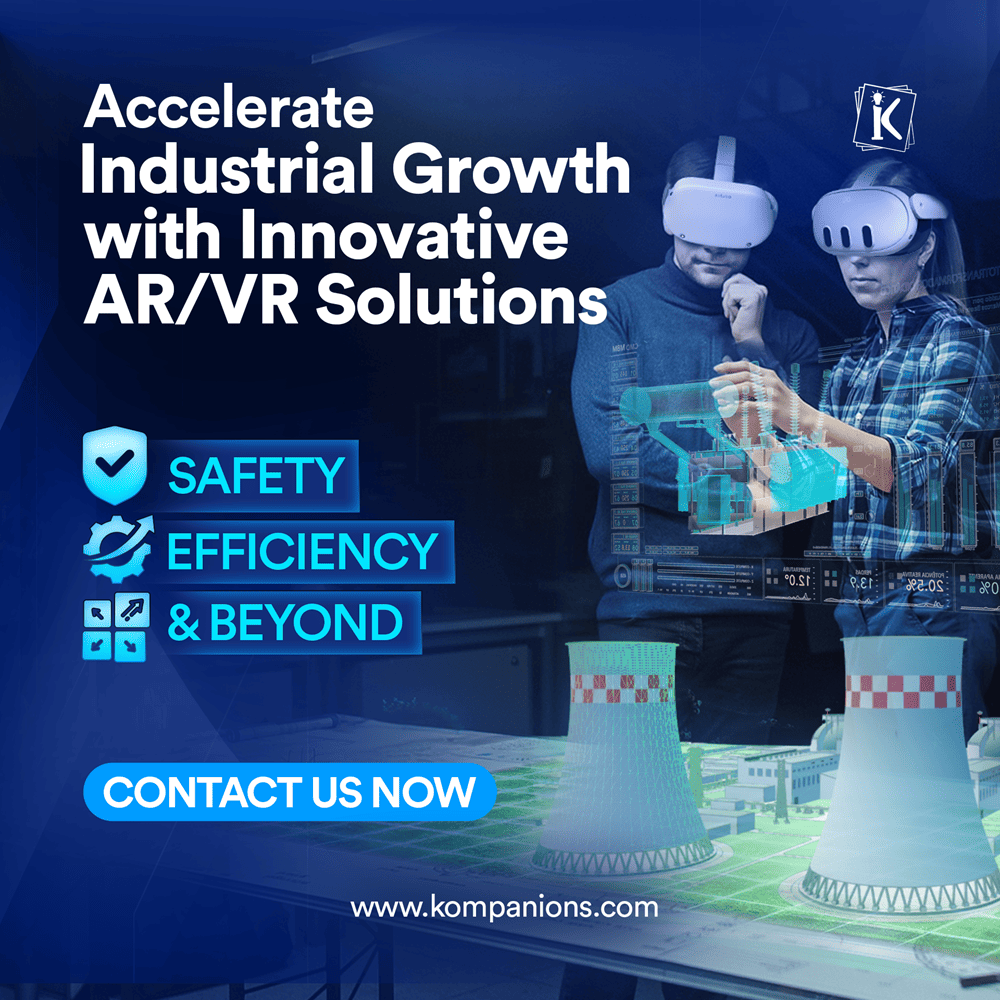VR Fire Extinguisher Training: Immersive Safety Simulations (2025 Guide)
Virtual reality (VR) is vastly changing the landscape of fire safety training. VR is creating a new way to learn how to use a fire extinguisher and, in turn, is helping to increase the survival rate for both employees and first responders.
Until recently, the first step in using a fire extinguisher was to pull its pin. Now, with the advanced development afforded by VR, it's clear that the first true step is assessing the situation to determine whether to fight the fire or flee.
Sectors such as construction, oil and gas, mining, and marine safety are moving quickly to take up this tech to lower costs and improve readiness. VR-powered safety solutions are shaping up to be the next big thing.
How VR Fire Extinguisher Training Works
VR fire training immerses users in a 360-degree hazardous environment using headsets (such as Oculus, HTC Vive) and motion controllers. Trainees physically interact with virtual extinguishers, alarms, and evacuation routes, with scenarios adapting dynamically to their actions.
Key Components of VR Simulations
- Realistic Fire Physics – The simulations replicate real-world fire behavior, including dynamic flame spread, smoke density, and heat effects, providing an authentic training experience.
- Haptic Feedback – Trainees feel the recoil and weight of extinguishers, enhancing muscle memory for real-world emergencies.
- Multi-Scenario Training – VR offers various scenarios, including office fires, industrial blazes, chemical spills, and confined space fires.
- Performance Analytics – The system tracks reaction time, extinguisher technique, and evacuation speed, offering real-time feedback to improve efficiency.
- Collaborative Learning – Advanced VR platforms enable multiplayer training, making it possible for teams to work together in emergency scenarios.
Case Study: A 2023 NFPA report found that VR-trained workers had 45% fewer errors in real fire emergencies compared to those who underwent traditional training. This highlights the effectiveness of VR safety training in improving real-world preparedness.
Seven Proven Benefits of VR Fire Safety Training
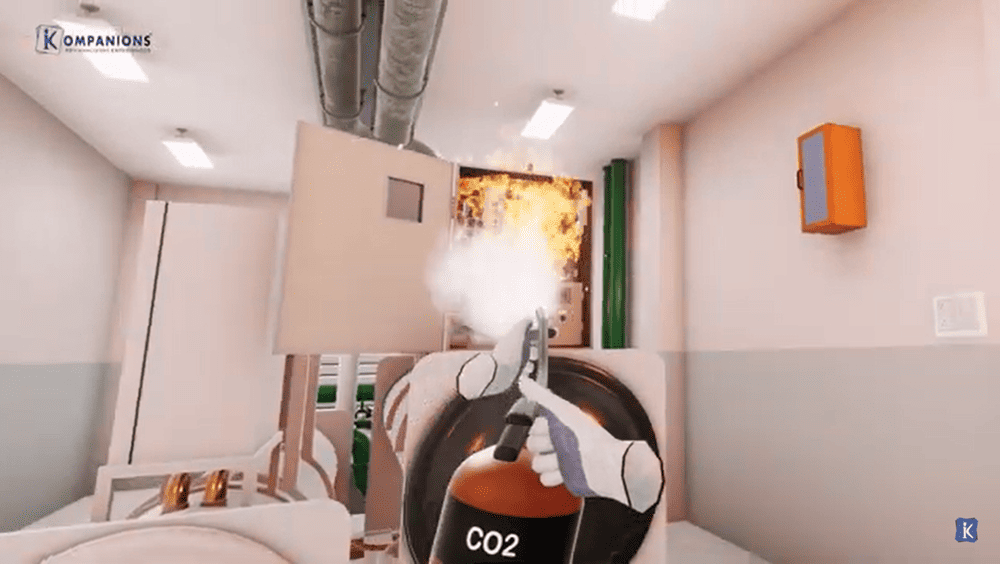
- Zero Physical Risk – Employees can practice extinguishing chemical fires, engine room blazes, or electrical fires without real-world dangers.
- Higher Engagement & Retention – Gamified learning improves participation by up to 60% (according to a PwC study).
- Cost Savings – VR training eliminates the need for expensive live fire drills, props, permits, and cleanup costs.
- Remote Scalability – Global teams can be trained remotely with VR for mining safety or offshore fire training, making learning accessible anywhere.
- Instant Feedback – AI-driven training provides corrective feedback on posture, spray patterns, and evacuation speed to improve learning outcomes.
- Regulatory Compliance – VR-based programs align with safety regulations such as OSHA 1910.157 and NFPA 1081.
- Adaptable Difficulty Levels – Training can be customized for beginners or advanced professionals, including VR for height safety training and confined space rescue.
Top Industries Using VR Fire & Safety Training
From oil rigs to construction sites, companies are leveraging VR to train employees more effectively. Let's explore:
1. Oil & Gas
Use Case: Simulating oil rig fires and gas leaks with VR and AR for oil and gas safety training overlays.
Why VR? Traditional fire drills in oil and gas facilities are expensive and logistically challenging. VR reduces training costs by 70% while offering safer alternatives.
2. Construction
Use Case: VR for construction safety includes fire hazards from welding, electrical faults, and gas leaks.
Why VR? Workers can practice fire safety drills in virtual high-rise buildings without exposure to fall risks, ensuring a safer training experience.
Train firefighters in a Safe and virtual environment with VR—zero risk, lower costs, and real-world readiness.
Get a Free Demo3. Marine & Offshore
Use Case: VR marine safety simulations cover engine room fires, ship evacuations, and chemical spills.
Why VR? Training personnel on a real vessel can be costly and disrupt operations. VR training eliminates the need for ship downtime while enhancing preparedness.
4. Mining
Use Case: VR for mining safety helps employees navigate underground fire evacuations and confined-space rescue operations.
Why VR? Mining fires pose significant risks due to limited escape routes. VR training allows miners to experience realistic emergency scenarios without real danger.
VR vs. Traditional Fire Training: A Side-by-Side Comparison
| Feature | VR Training | Traditional Training |
| Risk Level | Zero danger | Live flames, potential injuries |
| Cost per Session | $50–$500 (reusable) | $2,000+ (disposable materials) |
| Engagement | 90% completion rates | 60% completion rates |
| Location | Anywhere (remote-friendly) | On-site only |
How to Choose the Best VR Fire Training Program

Step 1: Define Your Needs
Determine whether you need VR for high-risk environments, such as VR for height safety training, or for general workplace fire safety.
Step 2: Check Hardware Compatibility
Consider whether you need standalone headsets (e.g., Meta Quest 3) or PC-powered solutions (e.g., Valve Index) based on your budget and training scale.
Step 3: Evaluate the Scenario Library
Look for industry-specific training programs, such as VR marine safety drills for ship crews or VR for construction safety for high-rise workers.
Step 4: Verify Certification Compliance
Ensure the program aligns with safety regulations such as OSHA, IMO, and NFPA standards.
Step 5: Request a Demo
Reputable VR training providers offer trial sessions. Testing the software before purchase can help assess its realism and effectiveness.
Prepare firefighters for real emergencies with VR- safe, cost-effective, and highly immersive training.
Get a Free DemoFuture Trends in VR Safety Training
- AI-Powered Simulations – Training scenarios will dynamically adapt based on user mistakes, making learning more personalized.
- Multiplayer Drills – VR for construction safety will include team-based evacuations and emergency response training.
- AR/VR Hybrids – AR for oil and gas safety training will overlay digital flames onto real-world environments for mixed-reality drills.
- Haptic Suits and Gloves – New wearables will enhance realism by allowing trainees to feel heat and pressure, improving response training.
Conclusion
VR fire extinguisher training is no longer a futuristic concept—it’s a practical, cost-effective, and engaging solution for industries such as mining, marine, oil and gas, and construction.
With advancements like VR for height safety training and VR for mining safety, companies can significantly improve employee preparedness while reducing training costs.
As technology evolves, VR marine safety and AR for oil and gas safety training will continue to revolutionize workplace safety training, making it safer, more effective, and accessible to workers worldwide.

